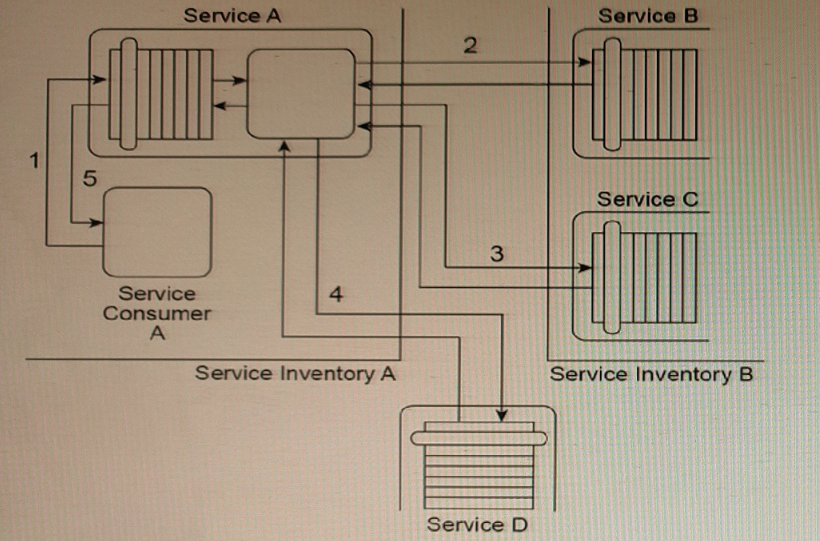Arcitura Education Exam S90.08B Topic 1 Question 5 Discussion
Topic #: 1
Refer to Exhibit.

Service Consumer A and Service A reside in Service Inventory
The Asynchronous Queuing pattern is applied to position a messaging queue between Service A, Service B, Service C, Service D, and Service Consumer A. This ensures that messages can be passed between these services without having to be in a stateful mode.
The Data Model Transformation and Protocol Bridging patterns are applied to enable communication between Service A and Service B, Service A and Service C, and Service A and Service D, despite their different data models and transport protocols.
The Redundant Implementation pattern is applied to bring a copy of Service D in-house to ensure that it can be accessed locally and reduce the unpredictability of its performance.
The Legacy Wrapper pattern is applied to wrap Service D with a standardized service contract that complies with the design standards used in Service Inventory B. This is useful for service consumers who want to use Service D but do not want to change their existing applications or service contracts.
Overall, this approach provides a comprehensive solution that addresses the issues with Service A, Service B, Service C, and Service D, while maintaining compliance with the Service Abstraction principle.
Currently there are no comments in this discussion, be the first to comment!